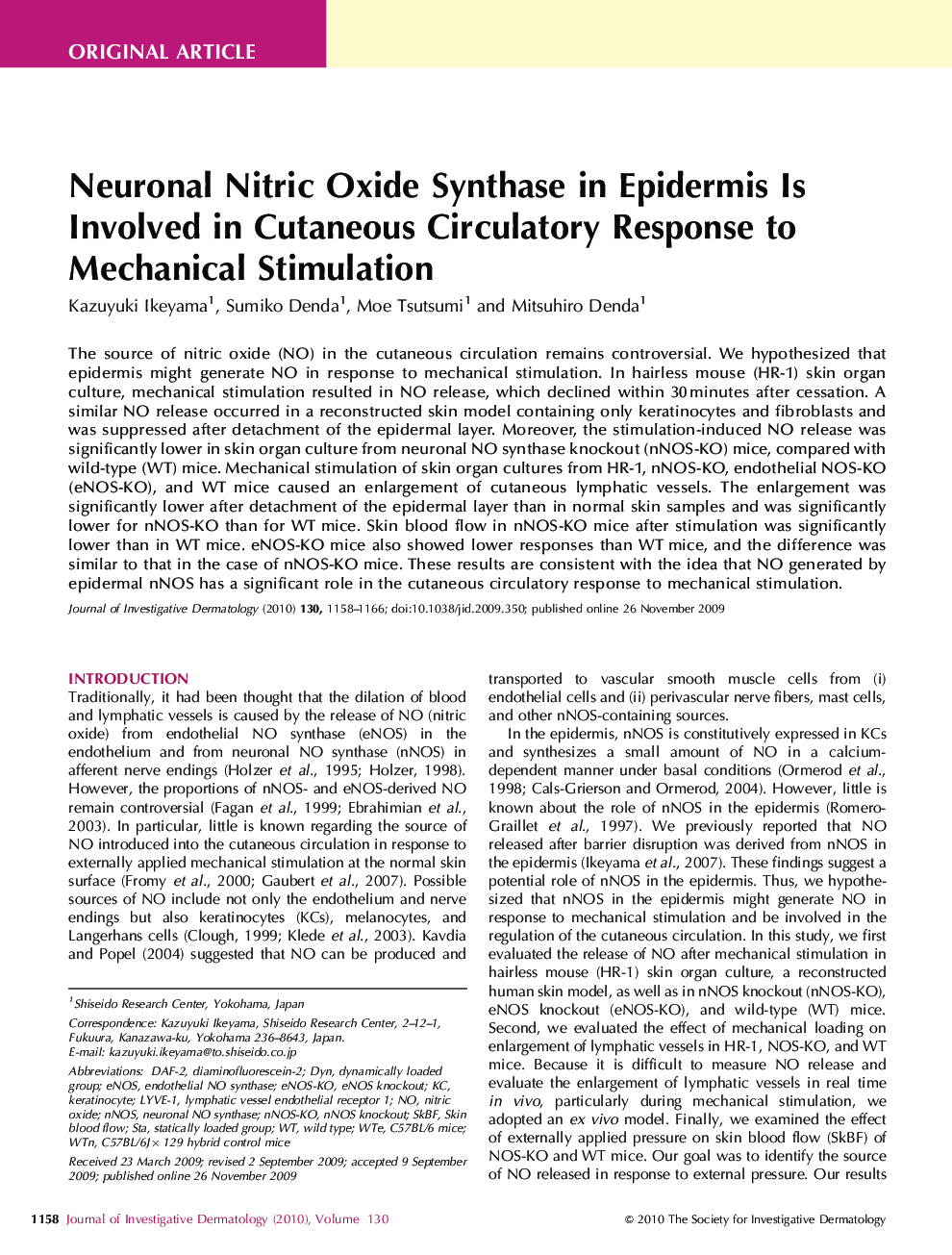| Article ID | Journal | Published Year | Pages | File Type |
|---|---|---|---|---|
| 3216101 | Journal of Investigative Dermatology | 2010 | 9 Pages |
Abstract
The source of nitric oxide (NO) in the cutaneous circulation remains controversial. We hypothesized that epidermis might generate NO in response to mechanical stimulation. In hairless mouse (HR-1) skin organ culture, mechanical stimulation resulted in NO release, which declined within 30Â minutes after cessation. A similar NO release occurred in a reconstructed skin model containing only keratinocytes and fibroblasts and was suppressed after detachment of the epidermal layer. Moreover, the stimulation-induced NO release was significantly lower in skin organ culture from neuronal NO synthase knockout (nNOS-KO) mice, compared with wild-type (WT) mice. Mechanical stimulation of skin organ cultures from HR-1, nNOS-KO, endothelial NOS-KO (eNOS-KO), and WT mice caused an enlargement of cutaneous lymphatic vessels. The enlargement was significantly lower after detachment of the epidermal layer than in normal skin samples and was significantly lower for nNOS-KO than for WT mice. Skin blood flow in nNOS-KO mice after stimulation was significantly lower than in WT mice. eNOS-KO mice also showed lower responses than WT mice, and the difference was similar to that in the case of nNOS-KO mice. These results are consistent with the idea that NO generated by epidermal nNOS has a significant role in the cutaneous circulatory response to mechanical stimulation.
Related Topics
Health Sciences
Medicine and Dentistry
Dermatology
Authors
Kazuyuki Ikeyama, Sumiko Denda, Moe Tsutsumi, Mitsuhiro Denda,
